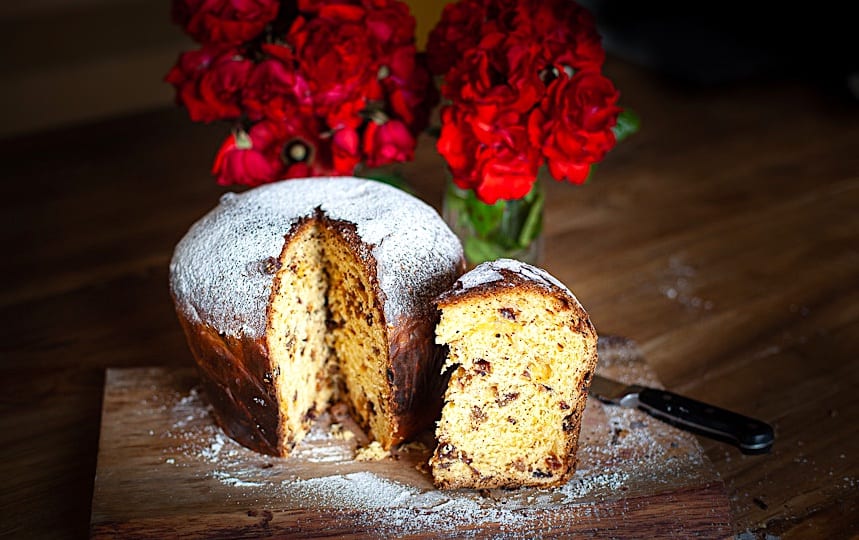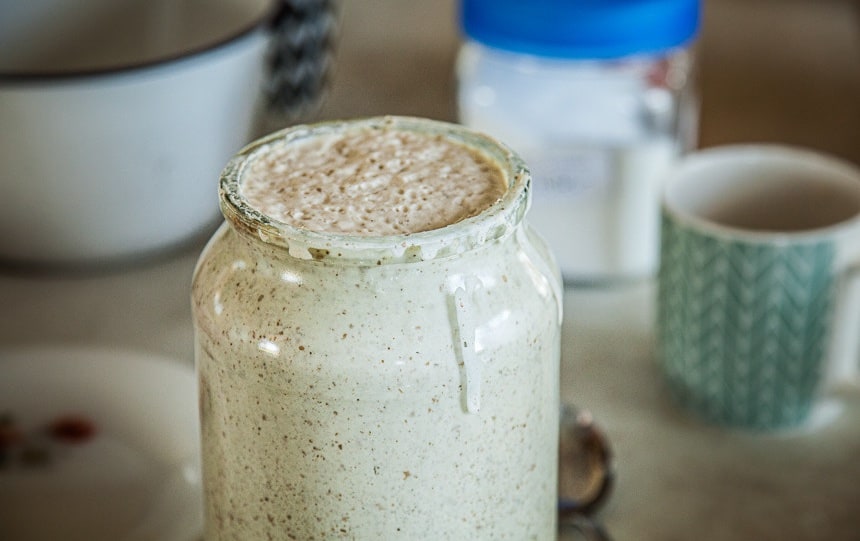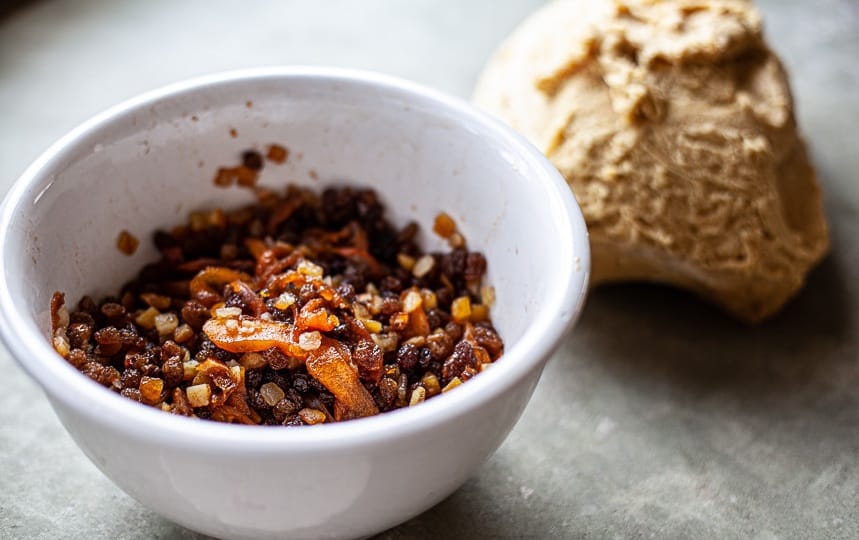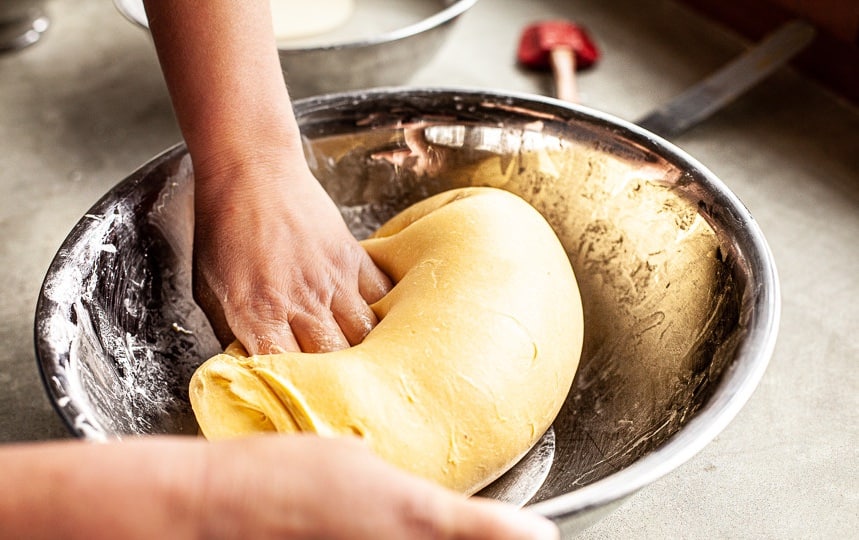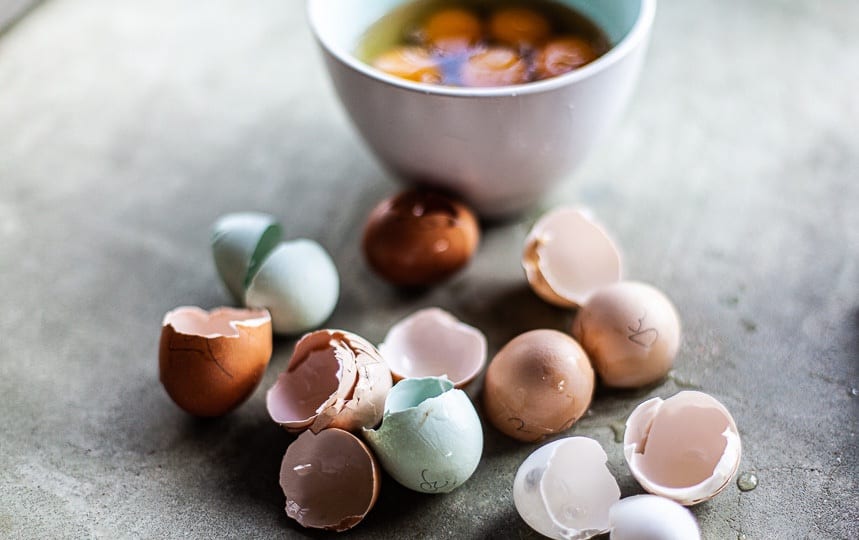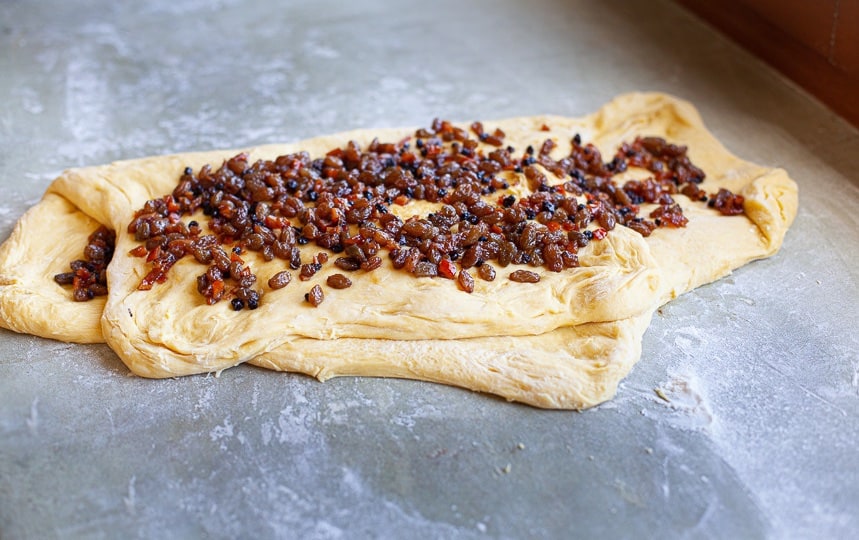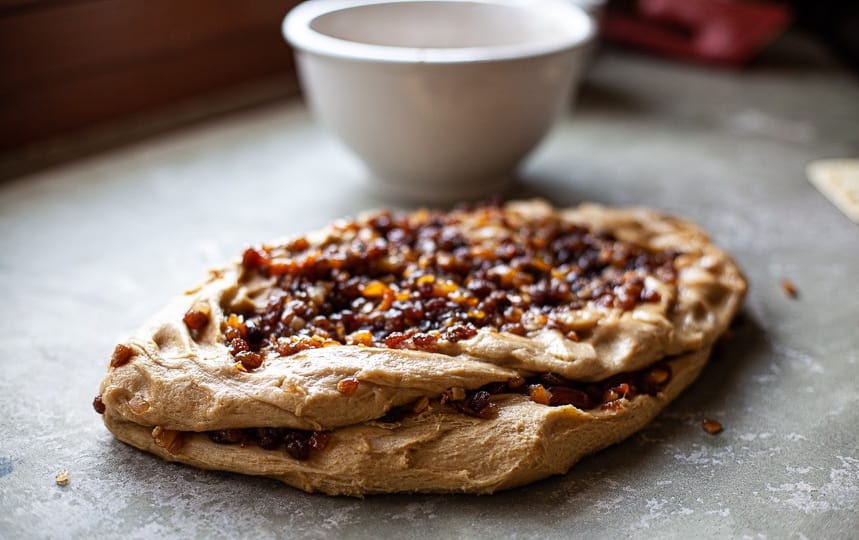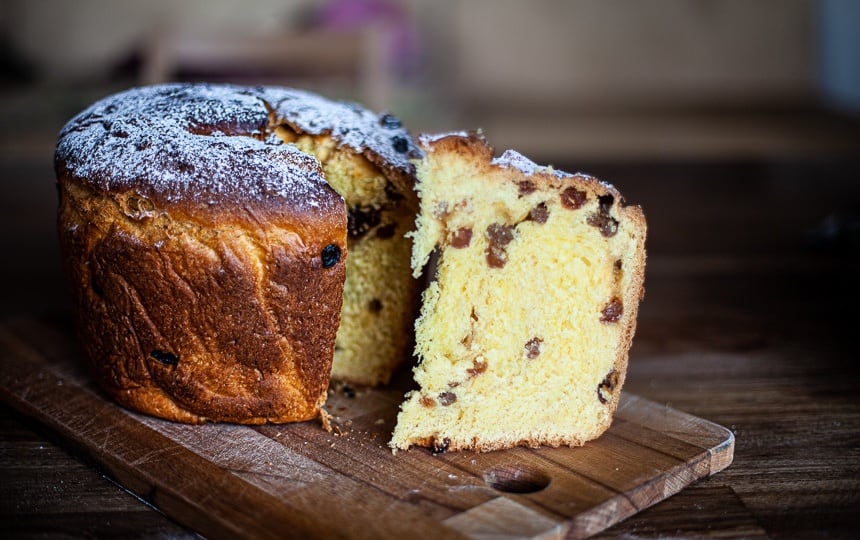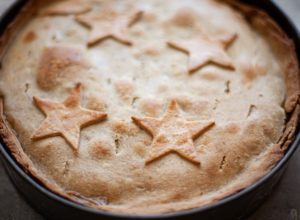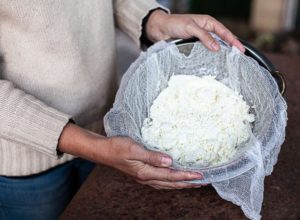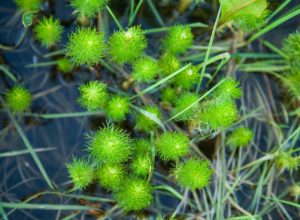Want to up your sourdough game this festive season? Try out this traditional naturally leavened panettone recipe for the occasion.
Panettone is a fragrantly rich traditional Italian Christmas bread, packed with fruit, alcohol, eggs, butter and whole milk. A truly traditional panettone is made with natural leaven and allowed to ferment for up to 48 hours before it is baked.
For those of you already baking with natural leavens, making your own panettone will add an element of challenge and excitement well worth the time. It makes an excellent gift that can be shared with your entire family.
This naturally leavened panettone recipe is best suited to those already baking sourdough breads and to those working with rye leavens.
Allow five days
You will need five days to make this naturally leavened panettone recipe. Two days to ensure your rye leaven is fresh and active.
And allow up to:
- 12 hours to mix and ferment a milk leaven.
- 24 hours to mix and bulk ferment the dough.
- 12 hours to proof ferment dough.
- 1.5 – 2 hours to bake.
Rye leaven
The first step is to make sure your existing rye leaven is very active and has low acidity. Therefore, a few days before you are due to start making your panettone, feed it regularly and remove all but a tablespoon of leaven from the jar before each feed.
Feed it up to three times a day to ensure low acidity and a very bubbly active leaven. Once it is very active use it to make a milk leaven.
Milk leaven (day before mixing dough) – First Day
The night before you are due to make your panettone dough prepare the milk leaven. Take a 1L clean jar with a wide opening and add to it a tablespoon of rye leaven. To this same jar add 200g of bread bakers flour. Then add whole milk slowly and make a thick pancake batter like consistency. Mix well and place a rubber band at the height of the mix to remind you where you started.
The next morning your milk leaven should be very bubbly and light and ready to use.
Candied fruit and alcohol (Day before mixing dough) – First Day
- 300g of sultanas
- 200g of candied peel, lemon and orange (make your own if you can)
- 1 tsp lemon zest and 1 tsp orange zest
- 1/3 C Marsala liqueur
- ¼ C Cointreau liqueur
- 1tsp Amaretto liqueur
- 2tbs vanilla extract or two vanilla pods with seeds extracted
Mix together in a large bowl (using your hands) so that all the fruit is easily coated with wet ingredients,
Panettone dough making steps and ingredients – Second Day
Start the dough no later than 9am. Use a very large bowl and add to it 1kg of bread baker’s flour, 400g of milk leaven, five egg yolks, five whole eggs, 20g of salt, 250g of caster sugar or honey and 120ml of whole milk. Mix very well.
Rest for 30 minutes and cover the bowl with a plate to stop the dough from drying.
After the resting period add 300g of unsalted chilled butter. Cut butter into very small cubes, the smaller the easier to incorporate, add a little at a time.
Mix into the dough extremely well. Once incorporated knead the dough until it is smooth and glossy. This will take a good 30 minutes of kneading. Rest for 15 minutes then poke the dough. If the dough is well developed your finger will come out clean. If it does not, knead until the dough is no longer sticky.
Bulk ferment – Second Day
Once the dough has been extremely well kneaded (silky smooth and not sticky), place it in a warm room (a greenhouse can be great) cover with a plate or another bowl so as to not loose moisture and to ensure it does not dry out.
The oven is a great place. Place a tray of hot water at the bottom of the oven and test with a thermometer the temperature of the oven before placing the dough inside, aim for 25C. Let it ferment for as long as it takes to almost double in size. It will take anywhere between 12 and 24 hours. There‘ll be a big window of discrepancy because each leaven is different and has different leavening power.
Add fruit and shape – Third Day
Pour the whole dough onto a clean surface (do not add flour to the surface).
Spread the dough out by holding the edges and stretching them out.
Place half of the fruit alcohol mix on one half of the dough then fold the dough onto itself.
Place the rest of the fruit on the new top layer and incorporate by kneading.
Knead for a few minutes. The aim is to spread the fruit across the entire dough. Keep kneading until the fruit has spread through the entire dough well. Now rest the dough for 30 minutes.
Shaping
Now you can start “shaping” your panettone (this part needs to be seen, so see here). Shaping requires tension to be built in the dough. This is done by folding and rolling the dough against the bench surface.
Proofing – final ferment
You will need a round baking tin 24cm wide and 14cm high or panettone baking papers. You will also need a very lightweight metal bowl (must be 100% metal as it will be placed in the oven and used to cover the panettone to stop the top from burning).
Line the tin with baking paper so that it comes up and above the sides as you will use the sides to pull the panettone out of the tin. Use two long sheets of baking paper overlapping and perpendicular to each other.
Place the shaped and taught dough inside and let it rise until it is almost peeking over the edge of the tin/paper.
Heat the oven to 200C. Place a tin (not glass) tray full of boiling water in the bottom of the oven at the beginning.
When the oven is hot place the panettone in and drop the heat to 180C. Bake for 20 minutes. Then place the tin over the top of the dough and bake for 1.5 hours or until a skewer comes put perfectly clean.
Remove from the oven and cool for 10 minutes. Then remove from the tin by lifting the panettone out using the baking paper as the handles. Work slowly and gently and place the panettone on a cooling rack. Then ask for help as you will want to remove the baking paper to allow the panettone to breathe.
Hold the panettone very gently and with baking gloves on as it will be fragile at this point. Brush with butter and alcohol mixture (see below). Then leave to cool on a cooling rack. Once completely cooled, dust with icing sugar and enjoy!
If you are using panettone baking papers, place the shaped dough inside the baking papers and allow to rise to almost the top. Once out of the oven insert two metal skewers into the panettone and hang upside down. All other steps as above.
Domestic ovens make baking panettone a little more challenging because the top of the panettone tends to cook before the base does. Hence you need to protect the top with a metallic reflective surface. Stay away from using disposable aluminium and instead find a suitable metal bowl that sits well above the baked product.
Storage
Panettone stores well. Cover well with two cotton tea towels and place preferably in a large cake tin container or in a plastic bag. Will keep very well for two weeks like this. It can also be placed in a freezer.
Butter and alcohol for sealing hot panettone
- ¼ C of Cointreau
- ¼ cup of brandy
- 1tbs of unsalted butter melted
Mix these three together and brush onto the hot panettone just after it comes out of the oven.
This homemade naturally leavened panettone recipe is delicious and an amazing gift to share with others for the labour and love can’t possibly go unappreciated.
Images: Village Dreaming

